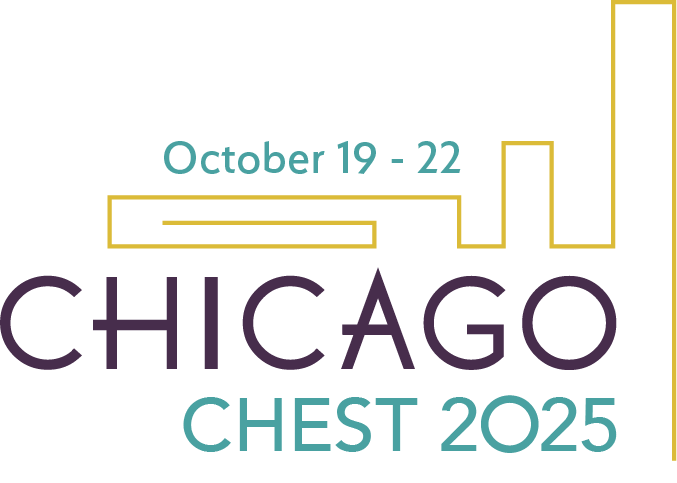
Recognition and management of shock are core skills for residents and fellows to master during training. Shock requires an approach contrary to the classical paradigm wherein diagnosis is followed by treatment; it is a medical emergency with heterogeneous presentation and continuous evolution. Clinicians must initiate corrective measures quickly, often with a limited degree of certainty. There is no standard approach to teaching this high-stakes critical condition to trainees, but in this column we will describe our approach to teaching shock to residents at the bedside.
1) Is the patient in shock?
Basic understanding of shock pathophysiology is key to its management. Start by defining shock as a mismatch of oxygen supply and demand to peripheral tissues, ultimately leading to end-organ damage. Teach the delivery of oxygen (DO2) equation (DO2 = cardiac output x carrying capacity [CaO2] = [heart rate x stroke volume] x [1.34 x (Hb) x SaO2 + PaO2 x 0.003]) to anchor an understanding of variables contributing to shock (preload, contractility, and afterload and the effect of systemic vascular resistance, as well as the contribution of anemia and hemoglobinopathies). Compared with the classic breakdown into distinct categories of distributive, obstructive, cardiogenic, and hypovolemic shock, many of the above components may coexist and meaningfully contribute.

Review markers of hypoperfusion to help the trainee recognize shock. Focus on physical exam features, including cool and mottled extremities, delayed capillary refill, somnolence/encephalopathy, and cyanosis, as well as findings that may identify a source (guarding and rebound tenderness in peritonitis, auscultation of crackles in acute decompensated heart failure).1,2 Point to the importance of reduced urine output as clinical evidence of end-organ hypoperfusion and its superiority to rise in serum creatinine as a marker of acute kidney injury in shock.3 Discuss the utility and limitations of serum lactate as a diagnostic tool.4
Finally, emphasize that shock is not equivalent to hypotension. Isolated tachypnea may be the first sign of critical illness. Tachycardia often precedes hypotension, assuming the patient is not taking negative chronotropes. The shock index (heart rate/systolic blood pressure) of > 1 is strongly associated with severe illness.5 Demonstrate this concept using concrete examples, such as a young patient with an early compensatory catecholamine response and one with hypertensive emergency leading to acute left heart failure and cardiogenic shock. Emphasize that hypotension is an advanced sign of decompensated shock and that the goal is to take corrective action before it develops.
2) Start treatment before a concrete diagnosis
Successful management of shock often requires starting treatment while some diagnostic uncertainty about the underlying cause remains. Outline triage of necessary interventions, starting with immediate stabilization (advanced cardiac life support, impending respiratory failure, hemodynamic support) and establishing appropriate intravenous/intraosseous access for vasoactive agents, sedation, antibiotics, and fluids, where appropriate. In this context, discuss indications for central line and arterial line placement.
Then, it’s a good time to return to the DO2 equation and the rationale for fluids as a means to raise the patient’s preload and thus their stroke volume. This point also explains the utility of bolus vs continuous fluid resuscitation. Point to the Surviving Sepsis Guidelines’ recommendation to give at least 30 ml/kg of crystalloid resuscitation within three hours of presentation but acknowledge the low quality of evidence and the potential for harm in certain patients, including those with mixed shock states.6 This may open a discussion of point-of-care ultrasonography (POCUS), a sensitive, specific, and reproducible tool to assess fluid responsiveness and guide resuscitation.7,8 Review its limitations—in particular, the assessment of the inferior vena cava collapsibility in positive pressure vs spontaneous respiration. Then, segue into selection of vasopressors and inotropes tailored to the patient’s physiology (eg, consider adding low-dose inotropic support to vasopressors in patients with sepsis and resultant cardiomyopathy). Discourage the use of fluids as a means to avoid vasopressor use, reminding learners of the importance of systemic vascular resistance.
During initial triage, attend to life-threatening laboratory abnormalities such as significant potassium, calcium, or acid/base abnormalities that warrant immediate correction. Discuss the indications for, and timing of, renal replacement therapy.
Unless the patient is at risk of impending respiratory failure, intubation should generally be deferred during the stabilization period. Review the potential consequences of induction agents and positive pressure ventilation in patients who are volume-depleted, in right ventricular failure, or with significant metabolic abnormalities and how they may lead to cardiovascular collapse.
At this point, pause to consider goals of care and the patient’s desire to receive or defer aggressive care. Discussion with either the patient or their surrogate to ensure that the described interventions are within the patient’s wishes is absolutely critical. When possible, one team member may speak to a surrogate while another continues efforts to stabilize the patient.
3) Evaluate for etiologies of shock
At this point, you have already spoken about the utility of POCUS for hemodynamic assessment, and, here, you should turn to its use as a diagnostic tool. Rapid echocardiography may demonstrate right ventricular dilation consistent with acute pulmonary embolism or the diastolic collapse of cardiac tamponade. Lung ultrasound may show evidence of pneumothorax or B-lines that suggest decompensated heart failure. Abdominal ultrasound may show free fluid consistent with intraabdominal bleeding. These findings can be obtained in minutes at the bedside with minimal training.9
Highlight additional data that can be obtained in patients with central venous access, again returning to our initial discussion of shock physiology. Explain expected central venous oxygen saturations in different shock states and discuss the limitations of central venous pressure.
4) Plan ahead
Following triage, stabilization, and initial evaluation and management based in physiology, go over preparation for upcoming needs or obstacles. Consider source control, particularly for patients with sepsis or hemorrhage. Encourage early consultation for assistance with advanced hemodynamic support or renal replacement therapy and discussion with nursing leadership to ensure appropriate staffing. For patients who require transfer to radiology, the cardiac catheterization laboratory, or surgery, discuss what goals need to be met to transport these patients safely. Finally, and most importantly, highlight the need for a calm, collected, and collaborative environment where the input of all staff members is valued and respected.
5) Evaluate success or failure
Successful management of shock requires constant reevaluation. Trainees are encouraged to continuously assess for response to their treatment decisions and alter their approach, if needed. Review markers of success, including hemodynamic goals that may be met with vasopressors and inotropes, and clinical signs of adequate perfusion, including urine output, mottling, lactate clearance, and mental status.2
Acknowledge the dangers of anchoring and premature closure and urge humility. Management of shock requires willingness to consider alternative diagnoses or treatment strategies if the above goals are not met or if there are signs of deterioration. In our program, we encourage trainees to have a very low threshold to call for help.
Finally, emphasize the importance of a more in-depth assessment as soon as the opportunity to do so arises. Details of the patient’s presentation and preceding illness, exposures, recent clinical events, medications, or any number of other factors may point to a diagnosis or influence management. Ask learners to carefully review their work, ensuring that appropriate treatments are ordered, medications not appropriate in shock states are discontinued, and the necessary consultants are kept updated. It is also imperative that they communicate a clear plan to the multidisciplinary team, including colleagues from nursing, respiratory therapy, and pharmacy, as these specialists may identify additional challenges not readily noted by the physician.
Shock, irrespective of cause, carries very high risk of morbidity and mortality. Early recognition and structured approach to evaluation and management are critical skills for all clinicians.
The framework we present encourages trainees to develop a physiology-based approach to individualized, patient-oriented care. We recognize that there are many variations of our approach and hope that our thoughts are helpful to clinician-educators.
This article was originally published in the Fall 2025 issue of CHEST Physician.
References
1. Dumas G, Lavillegrand JR, Joffre J, et al. Mottling score is a strong predictor of 14-day mortality in septic patients whatever vasopressor doses and other tissue perfusion parameters. Crit Care. 2019;23(1):211. doi:10.1186/s13054-019-2496-4
2. Hernández G, Ospina-Tascón GA, Damiani LP, et al. Effect of a resuscitation strategy targeting peripheral perfusion status vs serum lactate levels on 28-day mortality among patients with septic shock: the ANDROMEDA-SHOCK randomized clinical trial. JAMA. 2019;321(7):654-664. doi:10.1001/jama.2019.0071
3. Legrand M, Kellum JA. Serum creatinine in the critically ill patient with sepsis. JAMA. 2018;320(22):2369-2370. doi:10.1001/jama.2018.16627
4. Levy B. Lactate and shock state: the metabolic view. Curr Opin Crit Care. 2006;12(4):315-321. doi:10.1097/01.ccx.0000235208.77450.15
5. Al Jalbout N, Balhara KS, Hamade B, Hsieh YH, Kelen GD, Bayram JD. Shock index as a predictor of hospital admission and inpatient mortality in a US national database of emergency departments. Emerg Med J. 2019;36(5):293-297. doi:10.1136/emermed-2018-208002
6. Evans L, Rhodes A, Alhazzani W, et al. Executive summary: Surviving Sepsis Campaign: international guidelines for the management of sepsis and septic shock 2021 [published correction appears in Crit Care Med. 2022;50(4):e413-e414. doi: 10.1097/CCM.0000000000005513]. Crit Care Med. 2021;49(11):1974-1982. doi:10.1097/CCM.0000000000005357
7. Levitov A, Frankel HL, Blaivas M, et al. Guidelines for the appropriate use of bedside general and cardiac ultrasonography in the evaluation of critically ill patients-part II: cardiac ultrasonography. Crit Care Med. 2016;44(6):1206-1227. doi:10.1097/CCM.0000000000001847
8. Yoshida T, Yoshida T, Noma H, Nomura T, Suzuki A, Mihara T. Diagnostic accuracy of point-of-care ultrasound for shock: a systematic review and meta-analysis. Crit Care. 2023;27(1):200. doi:10.1186/s13054-023-04495-6
9. Stickles SP, Carpenter CR, Gekle R, et al. The diagnostic accuracy of a point-of-care ultrasound protocol for shock etiology: a systematic review and meta-analysis. CJEM. 2019;21(3):406-417. doi:10.1017/cem.2018.498
